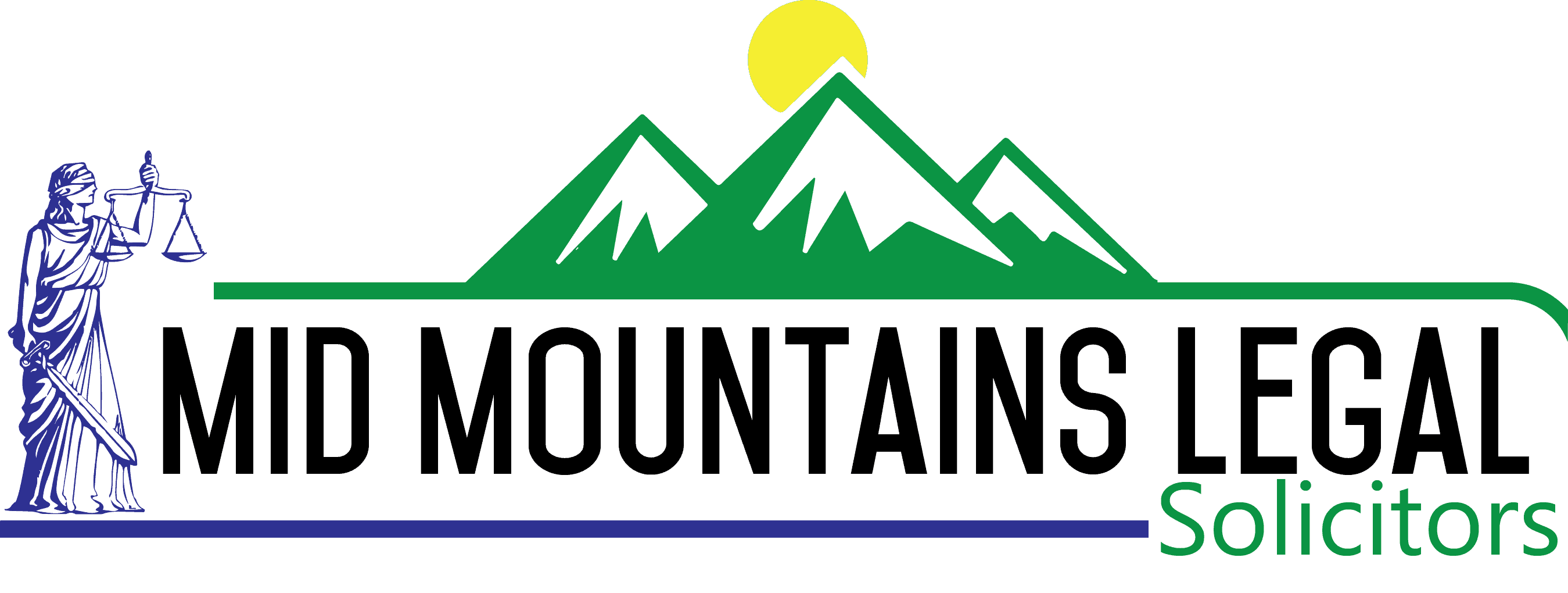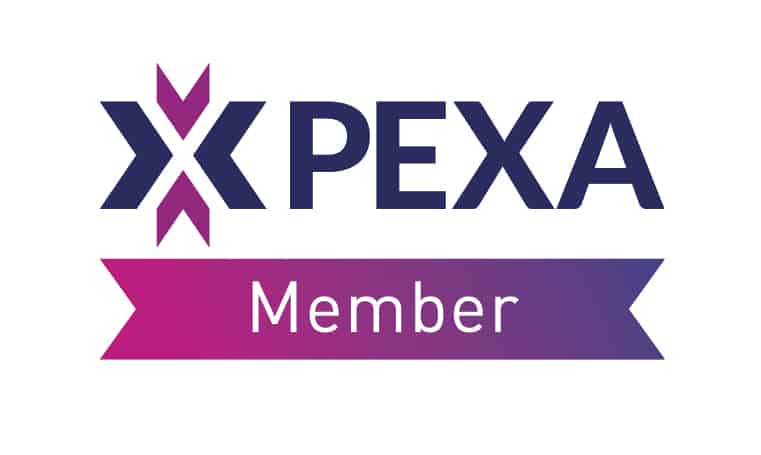Need help administering a deceased estate?
With our extensive experience in estate administration, we can support and guide you through the process at this difficult time.
We can help ease your stress by:
- providing asset holders with certified copies of required documents and completing documents for your signature; and
- gathering in the estate assets, paying debts, and distributing the balance in accordance with the will or the intestacy rules.

Transferring land in a deceased estate
What is a Transmission Application?
The executor of a deceased estate dealing with land where there is a Will may have to apply for a grant of Probate from Supreme Court of NSW authorising them to administer the estate in accordance with the Will.
If there is no Will, the next of kin needs to apply to the Supreme Court of NSW for a grant of Letters of Administration appointing them as administrator and authorising them to administer the estate according to the intestacy rules.
Land in NSW can be held by a person three ways:
- as an individual
- jointly with another person, and
- as tenants in common with one or more persons.
All these holdings are dealt with separately on the death of the landowner.
Transmission to the executor
If a deceased’s Will did not leave the land to a beneficiary, it must be transmitted to the executor using an electronic lodgement network operator (ELNO) by registering a Transmission Application with NSW Land Registry Services (LRS) . The executor can then sell the land and distribute the proceeds of sale to the beneficiaries.
Transmission to a beneficiary
If the deceased’s Will leaves a property to a beneficiary, it is transferred direct to the beneficiary using an ELNO by a Transmission Application to Beneficiary and payment of $100.00 stamp duty and LRS registration fees.
What is a Notice of Death?
If the deceased held the land jointly with another person, the surviving landowner becomes the registered proprietor. Registering a Notice of Death form with evidence of the death certificate with NSW Land Registry Services via an ELNO’s platform transfers the land to the surviving joint ‘tenant’.
Superannuation and Estate Administration
How do I give my superannuation away when I pass away?
Superannuation doesn’t normally form part of your estate. It can’t be included in your estate and or left to someone in your Will. It usually goes to the person that you nominate to receive the benefit from your superannuation.
Why can't I include my super entitlements in my Will?
The money in your superannuation account is not owned by you personally. It is owned and managed by the trustee of your superannuation fund who holds it on trust on your behalf. Only they can distribute the money in your account to your beneficiaries, but not as part of your Will.
What is a death benefit nomination?
A death benefit nomination is a non-binding nomination made by you advising the trustee of your superannuation fund who you would like to receive your death benefit on your passing.
A binding death benefit nomination is a binding nomination made by you directing your superannuation fund trustee to distribute superannuation in your account to your nominated beneficiaries . You can only nominate certain types of people, including a spouse, a de facto partner, children, dependents, inter-dependents, and your estate.
A traditional binding death benefit nomination lapses after three years if it has not been renewed. However an increasing number of funds now allow non-lapsing binding nominations.
How do I ensure that my super is distributed according to my wishes?
Complete a binding nomination and insert in your Will a clause stipulating who is to receive the benefits of your superannuation account. Nominate your legal representative as the beneficiary of your superannuation, who then distributes it according to your Will.
Or
make a binding death benefit nomination with your superannuation fund, which will distribute the money to the named beneficiaries on your passing.
What if I don't make a binding nomination?
If you don’t make a binding nomination or at the time of your passing it has expired, the superannuation fund trustee has the ultimate discretion about who receives that benefit. They can either pay the money directly to your estate or decide which of your beneficiaries should receive it.
Superannuation Death Benefit
A superannuation death benefit is a payment to a dependent beneficiary or to the trustee of a deceased estate. The form of the payment and the recipient are dependant on the rules of the superannuation fund and the requirements of the Superannuation Industry (Supervision) Regulations 1994. Superannuation differs from other assets in that it does not automatically form part of a deceased estate.
Nominating a beneficiary
If a super fund’s rules allow, a person can nominate a beneficiary, and the nomination can be binding or non-binding. A beneficiary must fit the definition of “superannuation dependent”, including a spouse or de factor partner, a child of any age, or someone who was financially dependent on, or in an “interdependency relationship” with the deceased at the time of their passing. An interdependency relationship exists between two people who live together in a close personal relationship, where one relies on the other for domestic support, personal care or financial support.
If a nomination is not made, a superannuation fund trustee may use their discretion to decide who should receive the payment, regardless of what is indicated in a will, or to make a payment to the deceased’s legal personal representative (the executor) to distribute the payment in accordance with the deceased’s will.
Binding nomination
For a binding nomination to be valid, it must be in writing, signed by the superannuation holder, and witnessed by two adults not mentioned in the nomination. The proportion payable to each beneficiary must be certain and beneficiaries must meet the definition of a superannuation dependent.
Some binding nominations can be indefinite and others must be renewed after 3 years. A binding nomination increases the likelihood of the benefit passing to an intended beneficiary and a superannuation death benefit is paid faster than if payment of the benefit is left to a trustee’s discretion or it is directed to an estate.
A binding nomination can be challenged in certain circumstances.
Non-binding nomination
Some superannuation funds do not allow members to make binding nominations.
A non-binding nomination means a superannuation fund trustee will consider the nomination as an indication but has full discretion to pay the benefit to an individual(s) or an estate they believe is the most appropriate beneficiary. Alternatively, the trustee can make a payment to the deceased’s legal personal representative to be distributed in accordance with the Will.
If a dispute arises over who is to be a beneficiary, it can be resolved through the Australian Financial Complaints Authority or through the courts. If the superannuation death benefit is paid to an estate and the deceased’s Will does not provide for it, or the deceased died without a Will, the benefit may be distributed in accordance with the NSW intestacy laws.
Tax returns
If a superannuation death benefit is received through a deceased estate, the estate will have paid tax on the beneficiary’s behalf, so the death benefit is not included as assessable income on a tax return.
If you receive a superannuation death benefit directly from a superannuation fund, the fund will provide an income stream payment summary to assist you to do a tax return.
Life Insurance and Estate Administration
The purpose of life insurance is to provide a cash payment for your loved ones if you pass away.
Life insurance can be held through a policy taken out personally or through a superannuation fund.
Should I hold policy in my own name?
If you name a beneficiary in the policy, they will receive the proceeds after your passing. Otherwise, the proceeds will go to your estate and be dealt with according to your Will.
If your Will does not specify who receives the life insurance proceeds, they will form part of your “residual estate” and be paid to your residual beneficiaries.
If you have outstanding debts or other claims against you when you pass away, the proceeds from the policy may be used to pay them.
What is a "testamentary trust?
If you want your life insurance proceeds to be paid to your estate, consider including a testamentary trust in your Will.
A testamentary trust:
- ensures that the proceeds are passed to your intended beneficiaries, as and when you direct;
- gives your beneficiaries capital gains and income tax advantages; and
- gives some protection for assets in the event a beneficiary becomes bankrupt or divorced.
Insurance held through your super fund
If you hold a life insurance policy through your super fund, your options as to who receives the proceeds are more restricted and the tax considerations are more complex than for a policy you own.
In that event:
- You may nominate your estate or a person who qualifies as a “dependent” for superannuation law purposes to receive the super proceeds; and
- if the beneficiary is not also a “dependent” for tax law purposes, there may be an additional layer of tax on the payout to the beneficiary.
Selling deceased estate shares (NSW)
Private company shares vs public company shares (stock exchange)
Private Shares
Privately held company shares are not traded publicly via a stock exchange. They require private transactions based on securities legislation and (usually) a shareholders’ agreement containing the procedures, conditions and rules about the transfer of shares. Proprietary Limited (Pty Ltd) companies have at least one share issued.
Public Shares
Public company shares are traded on an established stock exchange (e.g. the ASX), which allows anyone to buy and sell shares in the public market.
What happens to shares when a shareholder dies?
When there is a Will and probate has been granted, the executor complies with the deceased’s instructions and any shareholder conditions.
The deceased’s instructions are usually that shares be:
- gifted; or
- transferred to beneficiaries; or
- sold.
Gifting shares
The deceased may transfer the shares to a beneficiary as a gift. The executor notifies the broker (for public company shares) or the company (for private company shares) of the shareholder’s death. The executor may be advised what supporting documentation is required and details about the shares and potential dividends.
Different types of securities and shares have different applications and requirements.
If the shares are to be transferred to the executor who is also a beneficiary, the executor must provide a separate application and usually a certified copy of the grant of probate.
Transferring shares to beneficiaries
The executor and beneficiaries may agree to transfer shares as part of the inheritance, rather than selling them and distributing cash.
Any beneficiary inheriting estate assets should keep a record of the transfer of shares for the purpose of capital gains tax.
Selling shares of a deceased person
The deceased may specify that their shares are to be sold and the distribution of the proceeds of sale. Specific applications and requirements would need to be fulfilled.
The executor or administrator completes a ‘Transmission Application Form’ which identifies the legal representative and allows the shares to be transferred to the estate before being sold.
What if there is no Will?
If the shareholder died without a Will (i.e intestate), an eligible person (such as the deceased’s spouse or de facto partner or a close relative) must apply to the Supreme Court of NSW for a grant of Letters of Administration. The applicant then becomes the administrator of the estate.
The administrator takes care of funeral arrangements, collects and records assets, and pays off any debts. The Succession Act 2006 (NSW) determines how the estate is distributed.
The documentation and application requirements to sell or transfer shares is the same as when there is a Will.
What happens when a sole director/shareholder dies?
If the sole director/shareholder of a business dies, an executor can rely on the company’s constitution and the Corporations Act 2001 (Cth). Section 201F(2) of the Corporations Act 2001 provides that if a company’s sole shareholder and director dies, the deceased’s personal representative (i.e the executor, administrator or trustee) may appoint another person as a director of the company to continue business operations (unless the company’s constitution specifies otherwise).
If there is a Will, the executor can appoint an interim director to run the business pending for a grant of probate, following which the beneficiaries can take control of the company.
If there is no Will, once they the administrator is granted letters of administration, they manage the transfer or sale of shares.
What happens to jointly held shares?
Shares held jointly or co-owned usually do not form part of the deceased estate and pass to the surviving co-owner.
Common documentation requirements
To sell or transfer shares from a deceased estate, the following documents are usually required:
- Death Certificate: This serves as proof of the investor’s death.
- Will or Will extract and probate: For a small number of shares to be disposed or transferred and where probate isn’t required, the broker might ask for a certified copy of the Will. But if there is a significant number of shares, the broker will require a certified copy of the Will and a certified copy of probate.
- Letters of Administration: letters of administration are required for larger sums if the deceased died intestate.
- Small Estate Indemnity. This needs to be completed if there is no grant of probate. Determined on a case-by-case basis, share registries specify the general guidelines with shareholding thresholds varying between $15,000 and $25,000.
- Intestacy Request and Indemnity form: Administrators may be required to fill out an Intestacy Request and Indemnity form with the share registry and/or broker if there is no Will and letters of administration is deemed unnecessary.
- Executor’s Identification: An executor or administrator must provide proof of their identity.
- Deceased Holder’s Identity Form: The executor or administrator will need to provide this form if the shareholder’s share registration details and legal documentation don’t match.
- Section 1071B Statement: This form must be submitted if the grant of probate or letters of administration are issued in an Australian state or territory different from where the shares are registered.
What happens to your debts when you die?
Death does not extinguish a deceased person’s debts. The deceased’s creditors can still pursue repayment from the estate. Rules govern the order in which asset types can and cannot be used to repay debt.
Executor’s obligation to pay deceased’s debts
the Probate and Administration Act 1898 (NSW) provides that, if there are sufficient assets, the executor is to pay the deceased’s debts from the estate assets before distributing the estate . Failure to fulfil that responsibility can expose the executor to a personal liability to unpaid creditors.
Insolvent estates
If the estate assets are insufficient to meet all it’s debts, the estate is insolvent. The executor may have to advise creditors that the debts cannot be repaid and ask for the debts to be written off. However, creditors are not obliged to write off debts, and if they amount to more than $10,000 or they believe the estate assets are insufficient to pay all the deceased’s debts, they may ask the Court to appoint a bankruptcy trustee to the estate.
Secured vs unsecured debts
Secured Debts
A secured debt is fixed to one or more of the deceased’s assets. An unsecured debt is not attached to any asset. If a secured debt is not paid, the mortgagee will exercise their right to sell the property to recover the debt, so the executor will generally pay secured debts before unsecured debts.
If a beneficiary is bequeathed an asset securing a debt, they are receiving only the equity the deceased held in that asset. Provided the Will does not instruct that the debt is to be paid from the deceased’s other assets, to retain the asset the beneficiary must take on the debt attached to the asset. They must either repay or refinance the debt before the asset will be transferred to them.
Unsecured Debts
All unsecured debts have equal standing so no unsecured debt can be paid in priority to any other unsecured debt.
Are any debts passed on to beneficiaries?
If the deceased’s assets are insufficient to pay out the debts, beneficiaries will only be held liable for satisfying the deceased’s debts if:
- the debt was jointly incurred by the deceased and the beneficiary; or
- the beneficiary personally guaranteed the unsecured debt; or
- the debt was secured against an asset owned by the beneficiary.
Order in which assets are used to pay debts
The executor must pay the deceased’s debts in the following priority:
- Secured debts from the assets securing them; then
- Funeral expenses; then
- Testamentary and administration expenses; then
- Unsecured debts.
Where the estate is solvent, the Probate and Administration Act sets out the order in which assets should be applied to pay debts.
If the will contains specific monetary gifts, the executor must set that money aside from the estate assets that have not been specifically left to a beneficiary.
What assets can’t be used to discharge debts?
The following assets do not form part of the estate and are not available to the executor to pay the deceased’s debts.
- Assets owned by the deceased as a joint tenant will not form part of their estate. They pass by way of survivorship to the surviving joint tenant(s).
- If the deceased has life insurance or superannuation and has nominated a death beneficiary, they are paid directly to that beneficiary.
If the deceased did not nominate anyone as the beneficiary of their life insurance or superannuation benefits, the benefits may be paid to the estate. The executor can only use such benefits to pay for the deceased’s funeral and the estate’s testamentary and administration expenses. They cannot be used to pay any of the deceased’s other debts unless the Will specifically permits that.
What is a deed of family arrangement?
A deed of family arrangement (DFA) legally changes the division of a deceased person’s assets between the beneficiaries. It can either change the effect of the terms of a will or change the way assets are divided under the rules of intestacy.
A DFA can also give the legal personal representative of the estate (i.e. the executor if there is a will or the administrator if there is no will) protection against future claims.
The rules of intestacy
The rules of intestacy are in the Succession Act 2006 (NSW). They set out the way in which the assets of a deceased person with no Will (i.e. an “intestate estate”) are distributed.
The rules provide that the deceased’s spouse is entitled to the majority of assets, including an amount of money taken from the estate and gifted to the spouse (a ‘statutory legacy’). The spouse is entitled to the statutory legacy ($350,000 adjusted by the CPI from 2005) regardless of how much the estate is worth.
A DFA is valid only if it:
- is signed by the legal personal representative and all the beneficiaries; and
- has the consent of all the beneficiaries (over 18 years of age) entitled under the Will or the intestacy rules.
Do I need a deed of family arrangement?
A DFA allows the beneficiaries to change the distribution of assets to better suit their needs. It may be used when the beneficiaries wish to change the terms of the Will to suit their circumstances.
If an “eligible person” (a spouse, a child, a former spouse or a dependent) is aggrieved that they have received nothing or insufficient assets from a deceased estate, they may be able to challenge the distribution in court (a ‘family provision’ claim).
If mediation does not resolve a family provision claim, it may have to be heard by the court. This can take years to resolve, it can lead to estrangement between parties to the application, and it can be very expensive. Court proceedings can be avoided by completing a DFA.
When can a deed of family arrangement not be used?
A DFA cannot be used to reduce the entitlement of someone under 18 years, or for a person with an intellectual disability. Those require a court Order.
Capital Gains Tax (CGT)
The Income Tax Assessment Act 1997 (Cth) provides that passing an asset to a beneficiary of a deceased estate is exempt from capital gains tax (CGT).
A DFA may be covered by this exemption only if it is used to settle a claim to participate in the estate (such as a family provision claim). If the deed does not meet the requirements of ATO ruling TR 2006/14, CGT may apply.
Transfer Duty
Transfer duty (a.k.a. stamp duty) payable on the transfer of estate assets is minimal (currently $100). Legislation governing transfer duty is State based. In NSW, transfer duty on the transfer of assets following a DFA is payable on the value of assets over and above what the beneficiary would have received under the will or intestacy rules. (sec. 63 Duties Act 1997 (NSW))
Where to now?
Contact us if you need advice or assistance distributing a deceased estate.




